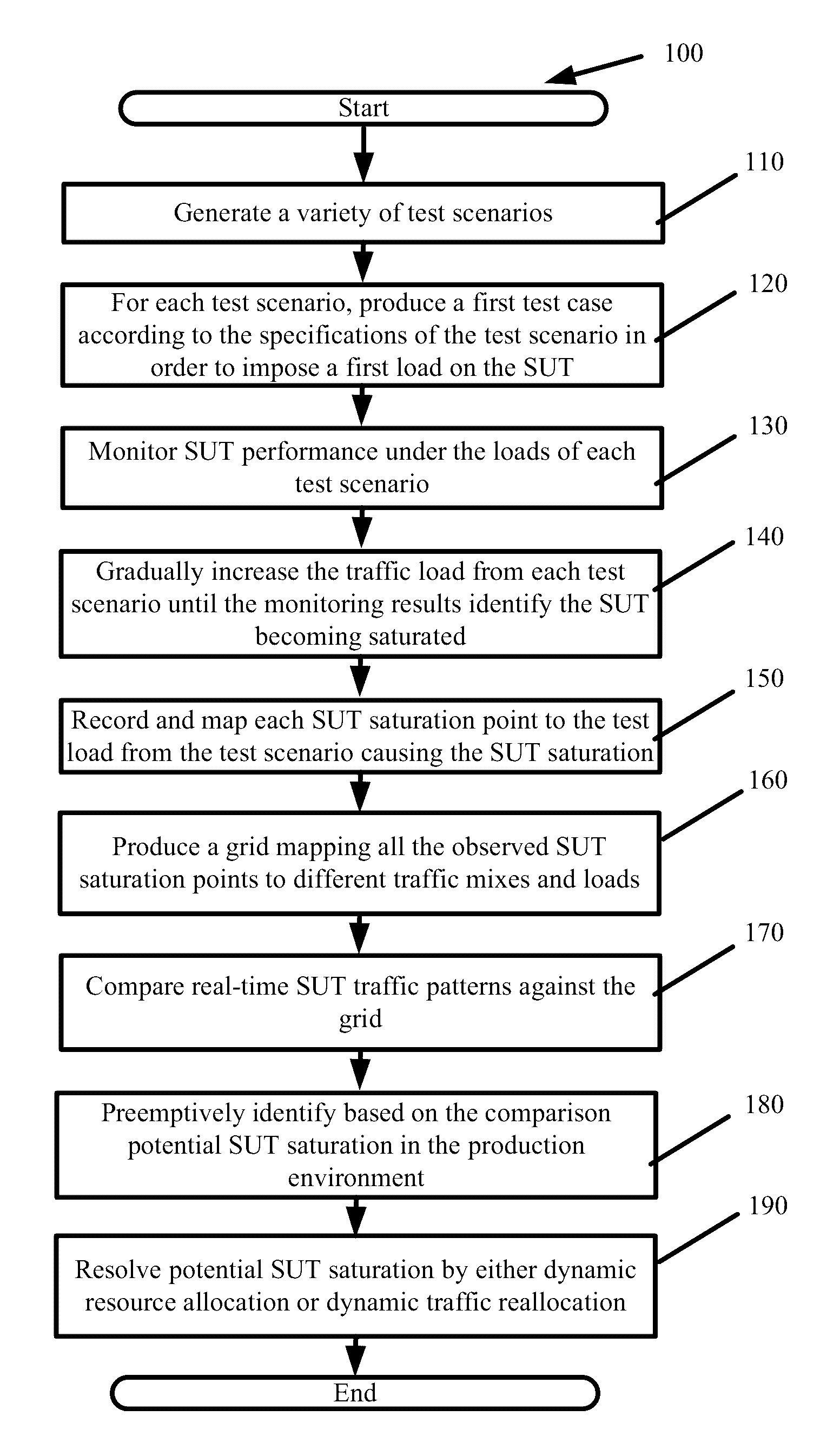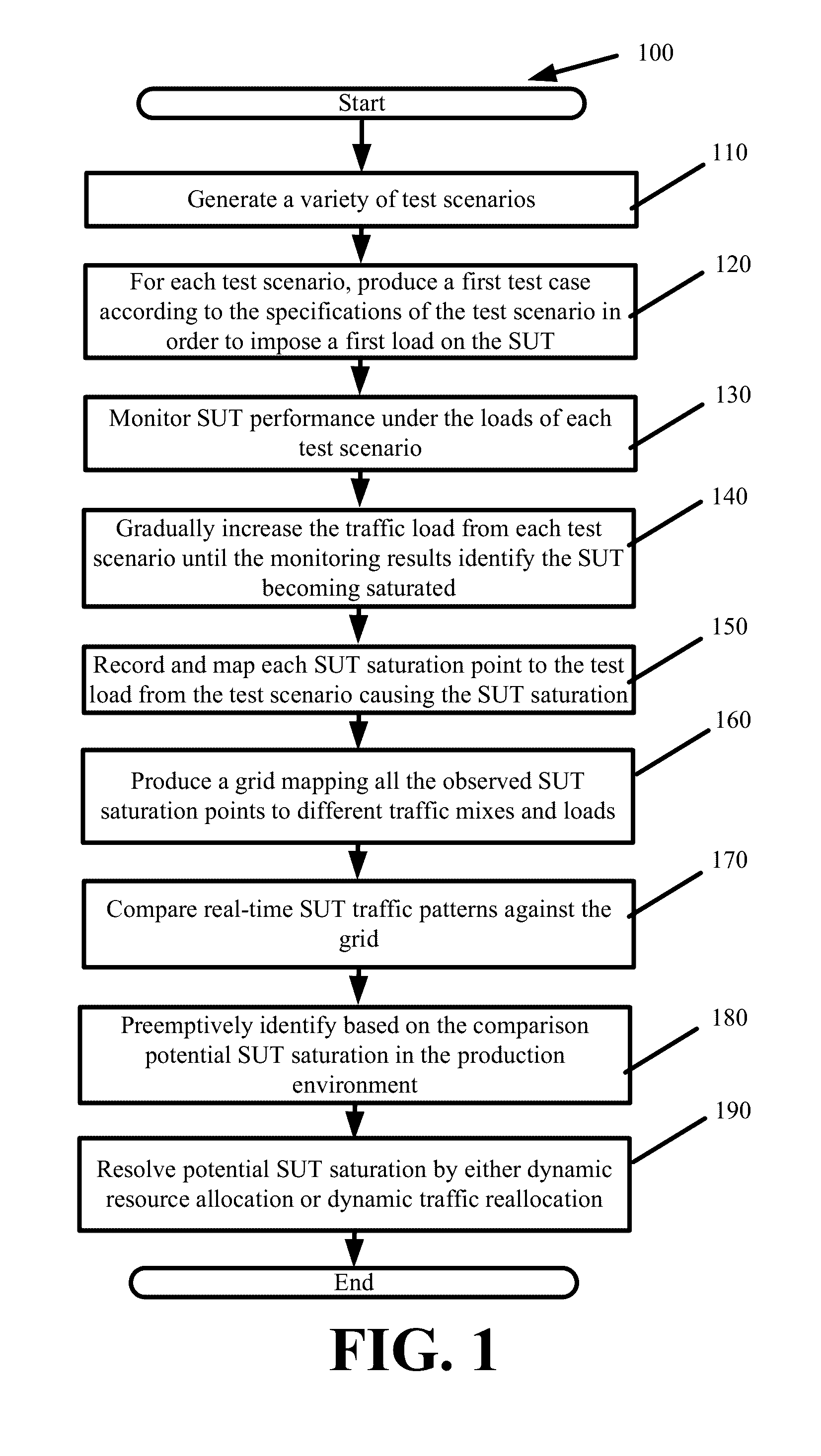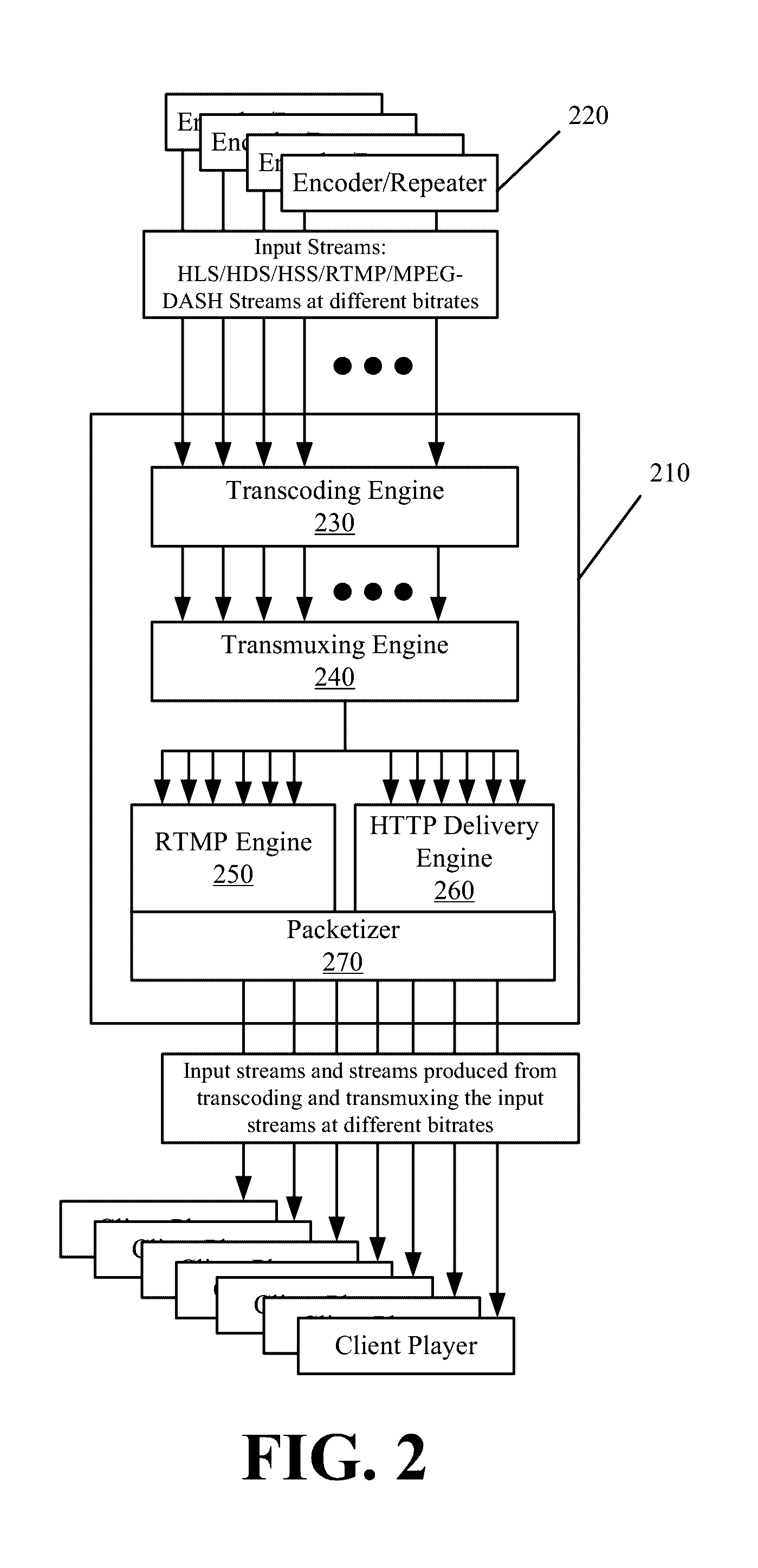Stream publishing and distribution capacity testing
a technology for publishing and distribution capacity, applied in the field ofstream publishing and distribution capacity testing, can solve the problems of degraded server performance, buffering or lowering quality, and various failures or delays of content publishers attempting to upload content to the server
- Summary
- Abstract
- Description
- Claims
- Application Information
AI Technical Summary
Benefits of technology
Problems solved by technology
Method used
Image
Examples
Embodiment Construction
[0022]Some embodiments provide systems and methods for dynamically testing streaming server performance and capacity, wherein the streaming server is any sever capable of performing one or more of the following responsibilities including accepting and storing live or linear streams published via one or more streaming protocols, and delivering (live, linear or recorded) streaming content to client devices via one or more streaming protocols. The streaming server may also transcode (i.e., re-encode content using different codecs) or modify the content container through transmuxing before delivering to the client. The systems and methods are implemented with a special purposed test server machine of some embodiments that tests capacity of different streaming servers under test (SUTs). A content stream includes media content that is not static in nature and can contain video, audio, or interactive elements.
[0023]FIG. 1 presents a process 100 for the dynamic testing performed by the test...
PUM
 Login to View More
Login to View More Abstract
Description
Claims
Application Information
 Login to View More
Login to View More - R&D
- Intellectual Property
- Life Sciences
- Materials
- Tech Scout
- Unparalleled Data Quality
- Higher Quality Content
- 60% Fewer Hallucinations
Browse by: Latest US Patents, China's latest patents, Technical Efficacy Thesaurus, Application Domain, Technology Topic, Popular Technical Reports.
© 2025 PatSnap. All rights reserved.Legal|Privacy policy|Modern Slavery Act Transparency Statement|Sitemap|About US| Contact US: help@patsnap.com



